
The purpose of this study is to examine acculturation strategies of expatriates in Korea in relation to spectator sport involvement. Berry's(1997) bi-dimensional model of acculturation was used as a theoretical framework to categorize the type of acculturation strategies of expatriates in Korea. Acculturation strategies of expatriates were classified into four types: integration, assimilation, separation, and marginalization. To be specific, there were 79 participants using the integration strategy, 28 using the assimilation strategy, 53 using the separation strategy, and 20 using the marginalization strategy. Research hypotheses were established to analyze differences on spectator sport involvement of expatriates between Korean spectator sport and their original cultural sport. There were significant differences in spectator sport involvement among foreigners in Korea. Firstly, the spectator sport involvement of the participants using the integration strategy was higher than that of marginalization. Second, participants categorized as using assimilation strategy were found to have lower sport involvement with Korea's spectator sport and had a higher involvement with their original cultural sport. Third, participants categorized as using separation strategy were found to have higher involvement with their original cultural sport than Korea's. Fourth, participants categorized as using separation strategy did not show significant differences with assimilation participants in comparing original cultural spectator sport. In conclusion, the result of the research indicated that expatriates living in Korea showed similar characteristics of Berry's (1997) acculturation strategies. Thus, It indicated that Berry's (1997) acculturation strategies are useful theoretical tools predicting psychological preference of expatriates in Korea. However, participants showed little difference in that all expatriates of four categories showed higher involvement with their original cultural spectator sport. Therefore, unlike Berry's (1997) theory, people with high level of acculturation showed higher levels of involvement with their original cultural spectator sport. It may provide useful information for Korean sport marketers regarding s foreign sport consumers in order to develop a market.

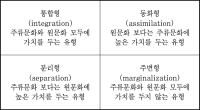
PURPOSE This study explores the impact of visual shape and exercise involvement on consumers' evaluation and happiness with healthy functional foods, specifically protein cookies. METHODS Using a one-factor design with two levels (pretty vs. ugly shape) and one measured variable (exercise involvement), we uncover interesting insights. RESULTS Consumers highly engaged in exercise show a greater purchase intention for ugly-shaped healthy functional foods compared to pretty-shaped ones. Conversely, consumers with low exercise involvement express a higher purchase intention and happiness when it comes to pretty-shaped healthy functional foods compared to their ugly counterparts. CONCLUSIONS These findings contribute to the sports management and sports science literature by shedding light on how visual shape influences the evaluation of healthy functional foods by sport consumers. Furthermore, this research offers valuable practical implications for designing the shape of such foods to cater to the preferences of sports enthusiasts.

KThis study aims to positively analyze relationship between internal communication, involvement, organizational identification, customer orientation, and relation continuity intention of workers at commercial sports center. For this end, we have conducted survey for 195 workers working at 10 commercial sports centers in the metropolitan area. Sampling method was Convenience Sampling Mode, and questionnaire has been structured to be self-administerd type. SPSSWIN Ver. 21.0 and AMOS 18.0 have been used for data processing. As a result, internal communication has positive influence on the organizational identification at first. Second, involvement has positive influence on the organizational identification as well. Third, organizational identification has positive influence on the customer orientation. Fourth, customer orientation has positive influence on the relation continuity intention. Fifth, internal communication has no positive influence on the relation continuity intention. Sixth, involvement has no positive influence on the relation continuity intention.

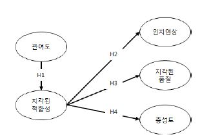
Although mega sporting events are becoming an effective means of brand communication, there has not been systematic research on involvement development and perceived fit enhancement through the sporting events. This study developed and tested a conceptual model delineating the impact of consumer involvement on perceive fit, and brand equity in mega sporting event context. Using quota sampling method, 1,847 participants (916 from IAAF; 931 from the F1) were recruited from several different cities in Korea during the mega-sporting events. Structural equation modeling were employed to examine the relationship between research constructs and test the model respectively. The study found that mega event involvement has a positive effect on perceived fit; and perceived fit influences brand equity(brand awareness, perceived quality and loyalty) toward event sponsor brands. The direct effects of involvement on sponsorship effectiveness (brand awareness, perceived quality and loyalty) did not have a significant effect on brand equity. The findings also reveal the mediating effect of perceived fit on brand equity.

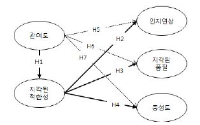

Purpose The purpose of this research is to empirically analyze the relationship between a indoor swimming pool on service quality and involvement, place attachment, place attitude & relationship continuity intention through structural equation model analysis. Methods For this purpose, this study set 241 members at the five private indoor swimming pools located in Seoul as the research subjects. In an effort to verify the proposed structural model, this study used IBM SPSS WIN Ver. 21.0 and AMOS 18.0. Results As a result, First, the results showed that service quality had a positive effect on place identity. Second, it was found that service quality had a positive effect on place dependence. Third, the results showed that involvement didn't have a positive effect on place identity. Fourth, involvement didn’t have a positive effect on place dependence. Fifth, the results showed that place identity had a positive effect on place attitude. Sixth, the results showed that place dependence had a positive effect on place attitude. Seventh, place attitude was found to had a positive effect on relationship continuity intention.

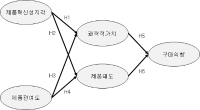
The aim of this study is to empirically verify the relationships between innovativeness perception of and involvement in sports products, and hedonic value, product attitude and purchase intention through the structural equation model. For this purpose, this study conducted a questionnaire survey of 291 college students in Chungcheong region. Sampling method was Quota Sampling Mode, and questionnaire has been structured to be self-administerd type. SPSSWIN Ver. 21.0 and AMOS 18.0 have been used for data processing. As a result, first, it was found that innovativeness perception had a positive influence on hedonic value; second, innovativeness perception had a positive influence on product attitude; third, product involvement had a positive influence hedonic value; fourth, product involvement had a positive influence on product attitude; fifth, hedonic value had a positive influence on purchase intention; sixth, product attitude had a positive influence on purchase intention. Such results imply that it's not desirable to overlook the level of innovativeness perception & involvement from a corporate perspective when an enterprise develops and launches new sports products.

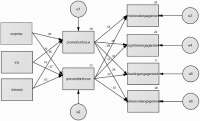
Purpose The purpose of this study was to find out the relationship between emotion and control focus and training involvement in games where elite shooters are late. Methods Thus, 228 elite shooters were selected and the research results were derived based on data analysis using discriminatory emotions, control focus, and training attendance scales. Results According to the analysis of the correlation between emotion, control focus, and training involvement, positive emotions of surprise, enjoyment, and interest showed a static relationship with improvement focus and training involvement, while negative emotions such as anger and guilt had a static relationship with prevention focus, but showed an inadequate relationship with training involvement. The multiple regression analysis between emotion and control focus showed that the improvement focus showed the most significant effect of enjoyment emotion, while the prevention focus showed that instability had the most effect on the prevention focus. Overall, the focus of improvement has been shown to be affected by training. Finally, it was found that positive sentiment had a positive effect on improvement focus and training involvement, while negative sentiment affected prevention focus and reduced cognitive involvement. Conclusions Positive sentiment toward the competition has been confirmed to enhance training participation by strengthening the focus of improvement, but negative sentiment has been shown to enhance the focus of prevention, reducing cognitive involvement.

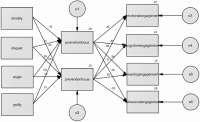
PURPOSE The purpose of this study was to synthetically explore different communication strategy patterns that are dependent on the events and stakeholders, which include professional sports players, teams, and the associations. METHODS Using the Python program, we performed web crawling and machine learning algorithms to analyze news articles for our research analyses. In particular, 696 articles on driving under the influence (DUI) of alcohol were gathered and subject to descriptive scrutiny; a total of 782 sentences were selected for the analysis. Also, among the 509 articles on illegal gambling, 484 sentences were analyzed. Moreover, 50 frequently reported words were extracted from these sentences to assess their frequencies through the word cloud method for concrete visualization. Then, the data were mapped in order to systemically understand the communication strategy patterns for each case, which were dependent on the stakeholders and timing of the event. RESULTS The empirical results revealed that in case of unethical events of driving under the influence that were reported in the news, most of the subjects chose an apology strategy immediately, but for illegal gambling reports, the parties involved rarely respond and it was difficult to find specific strategy patterns among the subjects. CONCLUSIONS The present study reveals that when professional sports teams were exposed to transgression, depending on the characteristics of the event and stakeholders, they chose different communication strategies involving fan characteristics for the event and subjects. Ultimately, they chose different strategies dependent on their fans’ involvement.
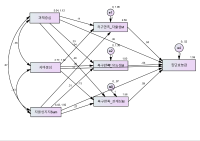
In sport context, the motivational climate created by significant others (e.g., coachs and peers) has been influences on the athletic-student's motivation, engagement, performance, and skill development. Collective efficacy is important for team performance because it influences a group's task choice, effort expenditure, persistence in the face of failure, and resistance to discouragement. This study was to examine the influence of peer motivational climate (i.e., task-involving and ego-involving motivational climate) and coach autonomous support for basic psychological need satisfaction and collective efficacy. In the study, participants were 289 athletic-students' of team sports. In the study then, questionnaire was assessed using by the correlation and path analysis. The results showed that task-involving motivational climate significantly predicted of collective efficacy, while ego-involving motivational climate were negatively predict to the collective efficacy. The results suggest the importance of considering peer influence in addition to coach influence when examining motivational climate in team sport.

Purpose The purpose of this study is to review the governance of the 2018 Pyeong Chang Winter Olympic Organizing Committee (POCOG), and to suggest potential governance models for the next mega sport event organizing committee. Methods For this study, In-depth Interview was conducted on 5 subjects who were involved in the process of organizing Pyeong Chang Olympic Games internally and also externally. Throughout the interviews, the subjects were asked to answer questions about the leadership of POCOG management, working relationships among the staff members, and improvement plans for the next mega event. Results The results of the study are as follows: First, POCOG sat up a governmental system and then tried to blend government officials and people from private sector to run the committee; Second, POCOG leadership was not an effective to run an Olympic Organizing Committee; Third, there were not effective working relationships among the staff members in the committee; Lastly, the subjects proposed the future organizing committee to hire more experts, to establish some kind of system that can prevent the turnover, and to go for privatization with the limited involvement from the government. Conclusions Therefore, this study suggests that the future mega sport event organizing committee should implement effective governance in bring more experts, and keeping them from the beginning to the end of the event. Also the organizing committee should consider implementing corporate governance to run the committee with entrepreneurial mindset, and to create cooperative working environment among the committee members.